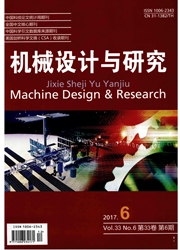

 中文摘要:
中文摘要:
针对直脚型、蟹脚型、之字型和弓型四种支撑梁结构型式的静电梳状谐振器,介绍了符合问题实质的五次超静定力学模型,给出了横向谐振频率、弹性系数和位移随谐振器结构参数和材料参数变化的函数关系。经与试验结果对比,各类谐振器横向谐振频率的理论值与实测值吻合较好,最大误差为11.62%。比较分析表明:在特征尺寸相同的情况下,直脚型、蟹脚型、之字型和弓型静电梳状谐振器的横向谐振频率依次减小,且都与谐振器的厚度无关;在特征尺寸和驱动电压相同的情况下,直脚型、蟹脚型、之字型和弓型静电梳状谐振器的横向位移输出能力依次增加;直脚型、蟹脚型、之字型和弓型静电梳状谐振器的横向弹性系数,均只与材料的杨氏模量和支撑梁的几何参数有关,而与横向位移无关。
 英文摘要:
英文摘要:
The simple mechanical models of lateral vibration of microresonators suspended respectively by four different beam types, namelx straight - leg, crab - leg, flexuous and meander beams, which are all superfluous systems with five unknown variables and show the essential aspect of the problem, are described. The function of the resonant frequency, spring coefficient and lateral displacement are given. The experimental results show that the theoretical reso- nant frequencies of microresonators are coincidence with the measuring results. The biggest error between them is 11. 62%, Compared with models of mieroresonators suspended separately by above different beams, it is found that the res- onant frequencies of them with same characteristic dimensions are decreased in proper order. However the lateral dis- placement output ability of them with same characteristic dimensions and driving voltage are increased successively. And the lateral spring coefficients of them are all related to Young' s modulus and their suspension geometry parame- ters, but not related to the lateral displacement.
 同期刊论文项目
同期刊论文项目
 同项目期刊论文
同项目期刊论文
 期刊信息
期刊信息
